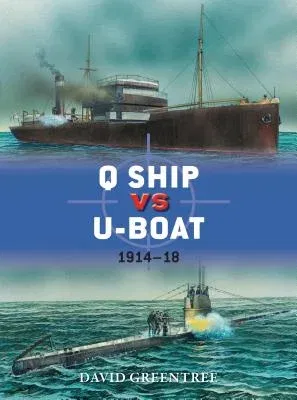At the start of World War I a new and potent threat to Britain's naval
supremacy took shape in the form of the Kaiser's Imperial German
submarines, thanks to their recently acquired ability to submerge and
stalk their adversaries. A submarine's crew could not board and capture
a merchant ship, however, and at first the German leadership was
reluctant to order their U-boat captains to use gunfire or torpedoes to
sink merchantmen - crewed by civilian seamen - because of the expected
hostile reaction of neutral countries such as the United States.
Instead, U-boat captains were ordered to surface, then check the
manifest of merchantmen and allow their crews to take to lifeboats
before sinking the cargo vessels, rendering the U-boat highly vulnerable
to attack. This enabled the Royal Navy to counter the submarine threat
with vessels whose outward appearance was that of a merchantman, but
which kept hidden an arsenal of weapons that would spring to life if a
U-boat surfaced - the Q-ships.
Q-ships came in all shapes and sizes - coastal steamer, trawler, barque,
yacht or schooner - but all had to look harmless in order to lure
opponents to the surface and encourage them to attack. Armaments
differed according to ship size; steamers commonly had 4in guns mounted
amidships and in the bow, trawlers 3-pdrs and sailing ships 12-pdrs.
Those who served on Q-ships had to accept that their U-boat opponents
would be able to strike first. Q-ship captains kept ready a 'panic
crew', which was trained to act out an elaborate evacuation to convince
the U-boat commander that the ship was being abandoned by its crew. The
Q-ship captain would remain behind with a handful of other crewmen
manning the guns, which remained hidden until the most opportune time to
unmask and engage the U-boat.
These deceptions did not go unnoticed, however; German captains learnt
to be cautious, and frequently would engage with their guns at longer
range and later in the war with torpedoes. U-boat boatswain's mate
Christof Lassen view of Q-ships as the 'most unpleasant object we could
hope to meet' was commonly held. As the Allies condemned the sinking of
merchantmen, the Germans vilified Q-ships as a crude deceit manned by
pirates and contrary to the rules of civilized warfare. Encounters were
often fought with bitterness and little quarter was given.
The Q-ship suited the Royal Navy's preference for offensive action to
counter the submarine. The Q-ship concept had emerged early in the war
when no other method seemed likely to counter the U-boat threat, and
flourished until new technologies and tactics were developed, tested and
implemented. Q ships instilled wariness into a previously bold and
seemingly invincible enemy. The usefulness of Q-ships waned as they lost
their surprise factor, but they helped mitigate the U-boat menace until
more effective and efficient means of defence were adopted. Featuring
specially commissioned full-colour artwork and drawing upon the latest
research, this engaging study brings to life the deadly duel between
these two very different vessels at the height of World War I.

